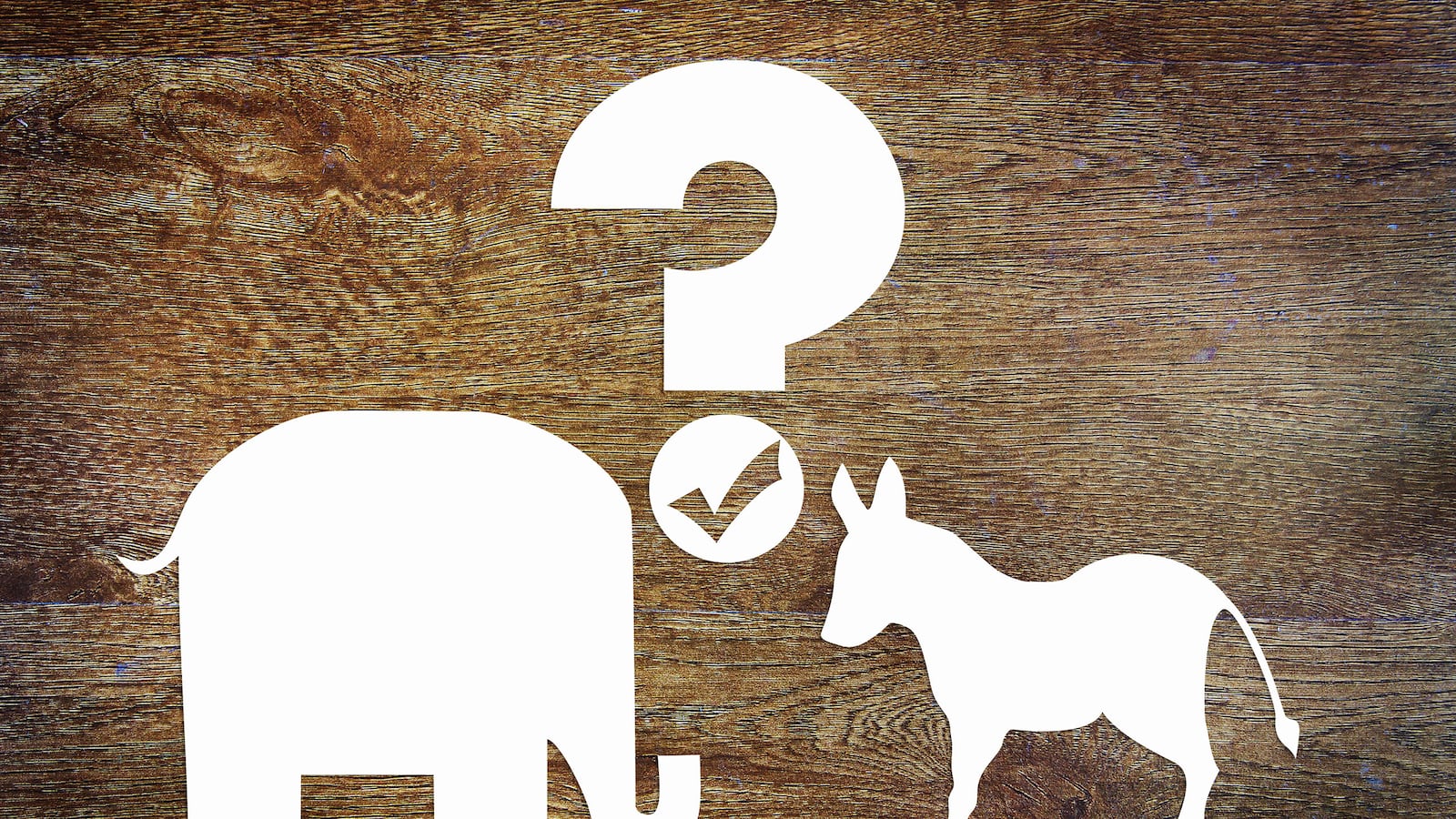At a time when the nation is more polarized than it has been in decades, many are hoping that humanity has more in common than appears on the surface. However, a new study published in the Quarterly Journal of Experimental Psychology suggests that liberals and conservatives not only have stark differences in opinion, they also have significantly different cognitive styles.
In other words, the two groups think differently when it comes to solving problems that require everyday logic. The study, performed by researchers at Northwestern University in Chicago, involved 130 college students who were given a survey designed to assess their political ideology.
The students were subsequently divided into liberal and conservative groups, and then asked to solve a series of problems that were specifically designed to differentiate between different problem-solving styles.
Each problem presented three different words, each of which could be combined with the same “solution word” to form a compound word. For example, if the three given words were bath, ball, and sun, the solution word would be room.
While the number of problems that liberals and conservatives solved was roughly the same, their strategies were different. Conservatives tended to be more gradual and analytical while liberals relied on insight, arriving at solutions after experiencing those “Aha!” moments.
Analytical problem solving occurs in a step-by-step fashion, and when one finally arrives at a solution they know exactly how they got there. With insight, one first becomes stumped by the problem, and then somehow suddenly comes up with a solution without fully realizing how.
At first these results may seem surprising and even the reverse of what would be expected. Conservatives are often the ones thought of as relying on intuition and “gut instinct,” where liberals are thought of as operating according to reason and logic. However, if you think about it, it actually makes a lot of sense.
Conservatives like to avoid risks and play things safe. Careful and methodical thinking ensures that problems are handled in a manner that’s tried and true. On the other hand, insight involves creative solutions and outside-the-box thinking. This cognitive style could help explain why liberals are more in favor of science and technology, which offer more innovative and experimental solutions to problems.
It is impossible to say whether one problem-solving style is better than the other, and the results do not imply that one group is intellectually superior. The authors do say that liberals are “more flexible, and tolerant of complexity and novelty,” while conservatives are “more rigid, are more resistant to change, and prefer clear answers.”
Previous research using the same task has shown that different brain circuits are active during insight and analytical problem solving. So in addition to having different views about policy, conservatives and liberals appear to have different brains in terms of structure and function.
This study adds to a relatively long list of empirically proven cognitive differences between liberals and conservatives. For example, a 2008 study (PDF) that catalogued items found in the bedrooms of college kids found that while conservatives owned more things that kept an orderly life—like cleaning supplies and calendars—liberals had more books and travel-related items. Similar to the study on problem-solving styles, this suggests that conservatives have a more organized cognitive structure than liberals, who often seek out novelty and spontaneity.
Another study published in the journal Behavioral and Brain Sciences found that conservatives have what psychologists call a “negativity bias.”
Liberals and conservatives were put in front of a computer where they viewed collages composed of negative and positive images. While liberals spent more time inspecting positive objects like a cute bunny rabbit or a cheerful child, conservatives placed their attention on things like spiders or other threatening images. This tendency to dwell on the negative makes conservatives more aware of threats, and in turn, more fearful of things that liberals might view as natural. This could help explain why conservatives typically fear change, a large government, and people from different ethnic backgrounds.
It is important to realize that even though liberals and conservatives have distinct and different cognitive styles, this doesn’t necessarily mean that they can’t find common ground. It is likely that doctors, musicians, artists, engineers, and soldiers all solve problems in dissimilar ways, yet that does not stop many of them from getting along or cooperating just fine.
While the left and the right might vehemently disagree on exactly how to solve many of the issues we are facing today, by recognizing these differences in thinking we are all more likely to make progress. Through combining problem-solving styles, we are equipping ourselves with two ways to arrive at solutions instead of just one, which can sometimes be a very good thing.






